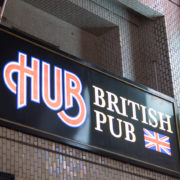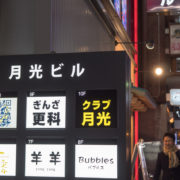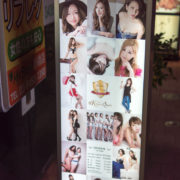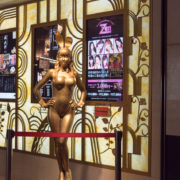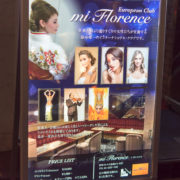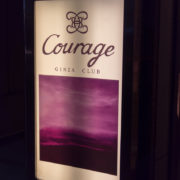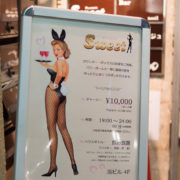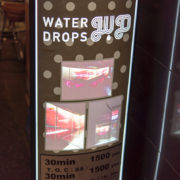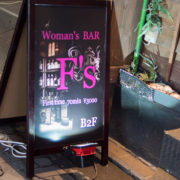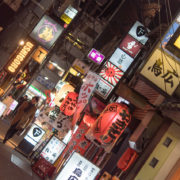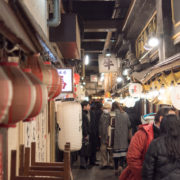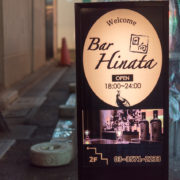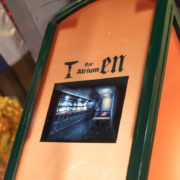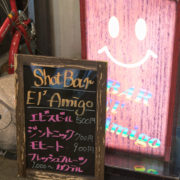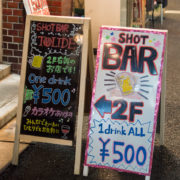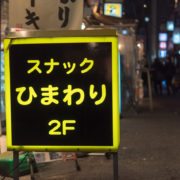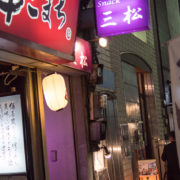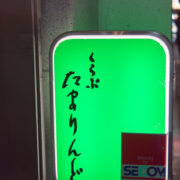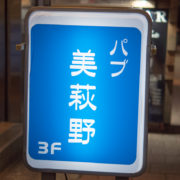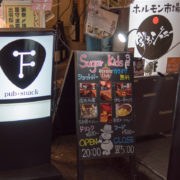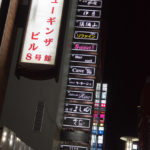 Tokyo may not be ethnically diverse compared to other metropolises, but when it comes to both the quantity and quality of options for dining and drinking out, no other city in the world comes even close.
Tokyo may not be ethnically diverse compared to other metropolises, but when it comes to both the quantity and quality of options for dining and drinking out, no other city in the world comes even close.
Our concern here at nomunication.jp is, of course, the bars. Walk down any street in Ginza and you’ll see row after row of tall, narrow buildings, each with twenty different signs, each of which is a different place you could be drinking tonight. Turn into that back alley and whoops, here’s another fifteen places just waiting for you.
So how can you tell the difference between all of these places? What makes a “shot bar” different from just a “bar,” and why go there instead of just going to some izakaya?
This guide will help you sift through all of those options in order to pick out a place that fits your style, party, plans for the night, and budget. That said, there are no hard lines between these definitions–certainly many exceptions exist throughout the city. So please, take these descriptions with a shot of pickle juice! I’ve included the Japanese names as well for your reference.
Description: Exactly what it sounds like… a UK-style pub
System: It works the same way as it does in the UK. So find a spot to stand or sit (free seating), order and pay at the bar, and Bob’s your uncle. Maybe someone will bring your drinks over for you.
Budget: Expect to pay 500-1000 yen per drink at the UK-style pub. There should be no charges besides what you order.
Making friends: Allowed
Don’t be afraid of walking in the wrong door in Ginza and stumbling into one of these places though. Clubs require that you know someone who knows someone. So you’ll simply be turned away if you just show up, even on purpose, and you don’t know anyone. Even someone who does know someone will probably be turned away if his particular “representative” isn’t available that night.
System: Unlike kyabakura and New Clubs, there are usually not Set times. However you’ll be expected to order a bottle as well, or continue drinking the same bottle you opened last time you visited. You probably won’t be able to order individual drinks without ordering said bottle.
Budget: The seat charge alone can run 40000-60000 yen. After your bottle service you’re probably over 80000 yen by now. Hope you brought your wallet.
Making friends: Despite the very fancy facade, high-end clubs have the same goal as the cheapest kyabakura: getting you to buy into an escape from reality. That escape from reality can often extend far beyond the walls of the club itself, including but not limited to regular dinner dates, shopping trips, karaoke afterwards, and so on.
Description: These sell themselves as high(er) class kyabakura. You should expect to find more staff, who are usually better educated, make better conversation, and serve better drinks.
System: New Clubs have the same system as kyabakura. So expect a Set time of 45-60 minutes.
Budget: Again, see the kyabakura entry but add 40-50% extra. A 45-60 minute set will probably start around 10000 yen and almost always has a 20% service charge associated with it. Plus alpha. Drinks are more expensive, bottles are more expensive… everything is more expensive!
Making friends: Expect even more involved sales tactics than a regular kyabakura. Again, the goal of all this is to part you with your money by making you buy into the fantasy.
Description: This word apparently came from “cabaret club” but today it refers to a “hostess club,” or in the case of all-male staff, “host club.” Although kyabakura are a far cry from the stuffy atmosphere of proper cocktail bars, it would be absurd to write a guide about Tokyo’s nightlife without mentioning them. Kyabakura are by the far the most heavily documented, often profiled, easily recognizable, and idolized establishments in this list. A mainstay of the Tokyo nightlife, hostess and host clubs offer men and women the opportunity to dive head-first into a fantasy where they are more interesting, attractive, humorous, successful, and charismatic versions of themselves. Even if only for a few hours, you can get away from the nagging wife, away from the boring boyfriend, or away from the “trying to avoid it but it’s still painfully obvious” sexually harassing boss at work. While some people are able to simply say “that was fun, now let’s go home” at the end of the night, others find themselves going further down the rabbit hole. They stay that extra hour, buy that extra bottle of champagne, or get yet another credit card advance. Do you want to see what it’s like for yourself? Kyabakura can be fun if you take them for what they are: (pricey) temporary escapes from reality. Unfortunately, hostesses and hosts often have limited education and take such jobs out of desperation rather than of their own volition.
While hostess and host clubs are not bars, they absolutely serve drinks. In fact you may find yourself being asked to buy drinks for your host/hostess. That drink may not actually contain alcohol! Remember, they’re selling you a fantasy.
System: The sign will probably show a price for a “Set” of around 45-60 minutes as a given price, say 5000-6000 yen. This will probably include all-you-can-drink cheap shochu or whiskey. Notably, beer is usually not included.
Budget: Chances are the above system doesn’t explain the entirety of what you’re being charged. There may be extra charges just for sitting down, such as a Seat Charge, but it’s not like you can avoid this by standing. If you or someone in your party asks for a specific hostess or host, expect an additional charge (this is known as “shimeiryo” / 指名料). If you buy a drink for a hostess or host, expect an additional charge. If you stay past the original Set time, expect an additional charge. If you order something besides the house whiskey/shochu, expect an additional charge. Additional hostesses or hosts at your table, additional charge. Stay past 11PM, additional charge. Oh hey a 10% “service charge” at the end of the night too. Can you see the pattern? You’ll be lucky to get out for 10000 yen per person regardless of what the sign outside says.
Making friends: The hostesses or hosts you meet may exchange contact info with you. It’s unlikely that this is actually his or her personal contact. Instead, it’s the contact of the persona you met at the kyabakura. They may contact you occasionally, and make some small talk, and appear genuine. But ultimately the goal is to get you to come back to the club and ask for them by name, since the above-mentioned shimeiryo is usually paid in full by the club to the guy or girl. There are some complicated dynamics at play here and while it’s not impossible to have a genuine friendly or romantic relationship with a hostess or host, 99% of the time, it’s purely just a fantasy.
Description: Girls bars attempt to bridge the gap between hostess clubs and cocktail bars. Just like a cocktail bar, you’ll sit at the bar and order drinks as you want. And just like a hostess club, you’ll be provided with a girl to talk to (generally one girl per group). The twist is that she’ll be on the other side of the bar rather than sitting next to you. Yes, all of the bartenders will be female. “But Whiskey Richard,” you say, “at my local bar in Poughkeepsie NY, we have actual good female bartenders that I can chat with all the time. Why should I be paying extra for this in Japan,” you may ask. In all honesty you probably shouldn’t. But for the more stubborn or desperate determined reader, I offer the following points:
- Girls bars staff a lot of girls, so if you’re there for 2-3 hours you’ll “meet” a lot of different ones. Are they really the kind of girl you want to spend your night talking to? Who knows!
- They are technically not hostess clubs, and they actively avoid being categorized as such due to the legal ramifications. So if you or someone important to you is opposed to hostess clubs, well, technically you didn’t go to one…
- Unlike hostess clubs, the bartenders at girls bars could actually be somewhat experienced bartenders who made the shift for a bump in pay. Or they could be girls that couldn’t make the cut at a hostess club. Either way this will be reflected in the quality of cocktails that are offered.
System: Again it’s tough to generalize about the systems used at girls bars. Most places will have you pay ~2000 yen per 40-60 minutes plus the cost of drinks (which range 800-2000 yen each). Girls bars commonly push the envelope of the law that governs most of the country’s nightlife — the Fueiho (“Law Regulating Adult Entertainment Business”). Notice how the female bartenders are specifically always behind the bar counter. Notice how they’ll rotate every 30 minutes or so, meaning you don’t talk to the same one all night long. Notice how they don’t sing along when someone gets drunk and decides to belt out a few. All of this is due to specific clauses of the Fueiho, and it’s to avoid being categorized as a kyabakura. This allows them to stay open until the wee hours, whereas kyabakura typically close around 12AM.
Budget: Depending on how quickly you drink it will probably end up around 4000 yen per hour, per person.
Making friends: That’s clearly the goal here, but remember, these girls are on the clock. Keep your expectations in check and it can be a lot of fun.
Description: Likely needs no introduction considering the izakaya boom going on outside of Japan at the moment, but just in case: an izakaya is a gastropub, i.e. a restaurant that puts just as much effort into their drink menu. Or a bar that puts just as much effort into their food menu. There’s an entire spectrum of izakaya, ranging from dirty yakitori hangouts in cramped alleys to pristine sashimi izakaya that use only the freshest ingredients from Tsukiji everyday.
System: If you order alcohol you’ll pay otōshi (and sometimes even if not). Otherwise the menus will have prices for all dishes and drinks clearly displayed. Many izakaya offer nomihodai (“all-you-can-drink”) options such as “120 minutes for 2000 yen,” where they’ll come to ask you for your last drink order after 90 minutes have elapsed.
Budget: Expect 3000-5000 yen per person depending on how much you eat and drink. Do some rough calculations to figure out if the nomihodai option is worth it for you: you’ll probably find it’s worth it if you order 3 or more drinks. Most izakaya will require everyone at the table to add nomihodai, since it would be too easy to game the system otherwise.
Making friends: Even if you don’t have a private room/booth, the tables at izakaya often have some kind of divider making this nigh impossible. Go to an izakaya with your friends, since it’s highly unlikely you’ll make any new ones there.
Description: Do you dream of becoming a drunk salaryman who takes off his shoes before splaying out on the bench of the last train home? Good, because it’s the ultimate Japanese cultural experience. Bring your cheapest suit and a tie that hangs way past your belt buckle, since your night begins, and potentially ends at a tachinomi (figuratively “stand and drink”). Tachinomi are dirt-cheap local watering holes, most not much larger than a broom closet. Often found in salaryman-centric neighborhoods and/or under the train tracks. How is this different from a “standing bar,” you ask? It’s really not any different. However tachinomi tend to be more Japanese when it comes to their menu and clientele.
System: If you’re lucky, someone will actually be there serving drinks. If you’re even luckier, a public restroom will be nearby. Some tachinomi have no staff whatsoever, and consist of only a few vending machines and tables.
Budget: A beer from the vending machine is probably around 300 yen.
Making friends: Highly encouraged, assuming you like middle-aged salarymen.
Description: As the name indicates, it’s just a bar with no seats or stools.
System: Standing bars are more likely to be Western-style, which is to say you will order then pay at the bar. Despite the fact that there are no seats, you could be told the bar is full when all of the counter space is only one deep.
Budget: Standing bars can be bargain basement–300 yen per drink–or if they’re aimed at expats they could charge regular bar prices. The deciding factor here will be the location and the crowd that shows up.
Making friends: Usually allowed.
Description: Here it is, the proper cocktail bar. This is what you came to this site for, right?
System: The Tokyo Bar FAQ should answer any questions you have about the typical setup for a cocktail bar in Japan. But to summarize: you sit down, order whatever, and pay at the end. Simple!
Budget: It’s difficult to generalize here. You can pay as little as 100 yen per drink at some places, or 10000 yen for 30ml of cognac at others. Most typical bars tend to the 1000-1500 yen per drink range. You’ll almost always get charged otōshi or a seating charge of some sort.
Making friends: Again it’s difficult to make a rule of thumb for this aspect when it comes to bars. Some clearly encourage customers to fraternize among themselves to meet new people. Even so, bartenders generally keep a watchful eye to make sure female customers are comfortable. They will ask male customers to dial it down if they feel they’re coming on too strong. With the notable exception of hotel bars, the higher in grade you go, the more unlikely it is to be okay to chat up strangers.
Description: Despite the name, shot bars usually aren’t actually for throwing back shots with the bros. Instead “shot” here means the main focus is serving whiskey neat – so don’t expect to find a wide variety of options for complicated cocktails. If you’re interested in whiskey and only whiskey, these can be great because prices for the same whiskeys tend to be lower than ordinary cocktail bars.
System: You might pay otōshi and get some nuts, but otherwise, you’ll just pay for the drinks at the end of your night.
Budget: They should have lots of great pours available in the 800-1200 yen price range.
Making friends: Allowed.
Description: Dining bars are bars that also serve restaurant-style food, i.e. not just bar food or microwaved stuff. There is of course no obligation to actually eat here, but it’s good to have the option.
System: Dining bars will charge otōshi or a seating charge. Order food and drinks from the menu.
Budget: Usually around 6000 yen per person for a decent meal and a few cocktails.
Making friends: Depends, but most customers come in pairs.
Description: A relic of yesteryear, snacks have more or less gone away in the central Tokyo area. But there are still a few holdouts that have managed to stay afloat despite decades of zero growth, especially around Shimbashi station. A “snack” doesn’t actually serve snacks, instead they’re usually quite tiny bars staffed by a lone mama-san (probably over 60 years old). Due to the private nature these can be a lot of fun if you go with a group and just want to hear some interesting stories about how things used to be much crazier. These places can easily go from empty to full with a small group of people.
The decades have been tough on snacks though, so don’t expect a place that is particularly clean or new.
System: Snacks usually offer all-you-can-drink cheap shochu and/or beer, and all-you-can-sing karaoke. Don’t expect any quality cocktails at these places either. If you venture into the countryside in Japan though, the local snack may be the only place open past 9PM.
Budget: 3000-5000 yen per hour
Making friends: The mama-san and her staff are your only hope!
Description: As misleading as it may be, a “pub” could also be equivalent to a “snack” or “kurabu,” i.e. one of the relics of Japan’s bubble years, likely staffed by the same mama-san the entire time it’s been open. It will be easy to distinguish between this and the British-style pub once you actually see the place.
System: If it’s a snack setup, you’ll generally pay a set price for a set time, which includes all-you-can-drink and all-you-can-sing karaoke. However the drink menu will probably be limited to one kind of cheap shochu, and that’s it.
Budget: Expect to pay 3000-5000 yen per hour, more if you get talked into buying drinks for staff.
Making friends: You probably won’t make any genuine ones

